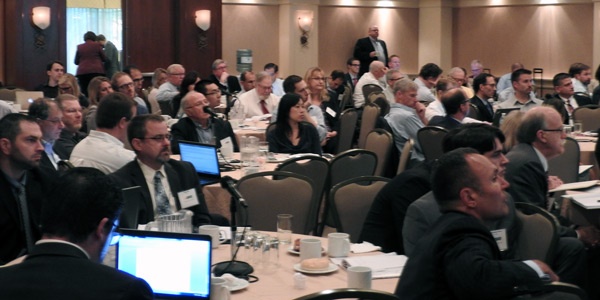NYISO CEO Brad Jones said he is not convinced by any argument that the DER Roadmap pits the strength of a large grid against the resiliency of a small grid, as the system needs both to be robust. “Our goal is to find a way to bring both of those together to allow each of those different parts of the grid to provide efficiency for our operations and reliability for the overall grid.”
Audrey Zibelman, chair of the New York Public Service Commission, said, “We want the distribution markets to be optimizing distributed energy resources and optimizing load and co-optimizing that with the wholesale market, so that way will have a two-way seamless grid that is vertically coupled, that allows us to have a system that is more reliable, more dynamic, more efficient and more environmental.”
Cristin Lyons, partner at consultant ScottMadden, discussed the difficulty grid operators and utilities face in gaining visibility into the volume of distributed generation and how and when it is producing. There also are questions about whether they can be aggregated and how they will be compensated, she said. “Can you verify when they’ve operated? Do you even know if they are coincident with peak? Are they dispatchable? … At the end of the day, how do all these resources get paid? I think if we’re ever able to figure out the money, everything else will follow. We’re not there yet.”
Nick Tumilowicz, who manages the Electric Power Research Institute’s DER integration effort, discussed Consolidated Edison’s Brooklyn-Queens project, which is using battery storage and distributed generation to delay construction of a $1.2 billion substation. EPRI is performing a life-cost analysis. “What does it look like when we deploy battery storage in the field … to support peak demand and efficient transmission and distribution deferral?”
Kelli Joseph, director of market and regulatory affairs for NRG Energy, considered how uncertainty in the markets currently limits how different technologies could participate. “There’s a lot of uncertainty … about what rate design they’re going to have on the distribution side. For some projects, without a wholesale participation, they probably don’t pencil out.”
Mike DeSocio, NYISO’s senior manager of market design, devised what he said is a simple way to look at how generation assets can be classified as distributed. “If you have an asset that’s large enough to participate in the [wholesale] market today, you’re not a DER. If you have an asset that’s too small to participate in the market today and you think you’re going to need to aggregate it to participate, that’s a DER, whether it’s in front of the meter or behind the meter.”








